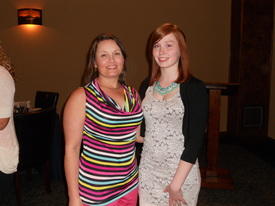How to figure amounts of food used..

tutti777
Posts: 72 Member
Example: Fat Free Greek Yogurt...1 cup (8 oz.) = 227g
If I only use 2 Tablespoons, how do I count this?
In a lot of cases, the amount choices given to chose from are nothing like what I used...
Hope I haven't confused anyone. Thanks
If I only use 2 Tablespoons, how do I count this?
In a lot of cases, the amount choices given to chose from are nothing like what I used...
Hope I haven't confused anyone. Thanks
0
Replies
-
Use a food scale: cups and tablespoons are by volume, nutrients are by weight. You can add number of servings to MFP, so 0.3 x 100g is 30g.0
-
If 8 oz is 227 grams then 2 Tbs of that item would be 1/8 Cup = 1 oz = 28 grams.
Solids are measured by weight, liquids by volume. Semi-solids are confusing (and I don't eat yogurt) but if you are trying to log 2 Tbs on a 1 Cup / 8 oz portion size, 2 Tbs would be be .125 serving.
Hope this helps and that I'm understanding your question correctly.0 -
If 8 oz is 227 grams then 2 Tbs of that item would be 1/8 Cup = 1 oz = 28 grams.
Solids are measured by weight, liquids by volume. Semi-solids are confusing (and I don't eat yogurt) but if you are trying to log 2 Tbs on a 1 Cup / 8 oz portion size, 2 Tbs would be be .125 serving.
Hope this helps and that I'm understanding your question correctly.
THANK YOU...Yes, This helps me greatly!0 -
So glad I could help. :happy: My two best investments have been a food scale ($25) and cutting board that has printed conversion charts (that was a xmas gift).0
-
The best thing I ever did in this respect was to download a free converter app (I know it's from free the apps but it says converter units on my phone). It has both volume and mass. Also invest in a food scale. Makes such a huge difference in accuracy.
Also when you're logging certain foods will let you change the unit of measurement for serving size. So if it says cups and you click on it it could go into a drop down menu that lets you put in grams or single units (like crackers per cracker etc.) or often TBSP or tsp. Not all will do that but you can always check.0 -
I just google it, I find the food with the same type of measurements I used (cups, tablespoons, or oz) but if there isn't one I just convert it, say I know I have 4 oz and there are only grams, I google how many grams in 4 oz, and it comes up at the top of the screen, it's 113.something so if there was a 100g serving option, I usually just change it to the 1 gram option (cause usually there is one) and do 113 servings
if you can get a food scale that's better than using cups and stuff because it's more accurate, but I go to college and can't just bring around a food scale with me, so I estimate conservatively
for things where you know you had like 5 crackers, if there is no like per cracker or per 10 cracker option, look at the box, it'll say like 18 oz weight, look at how many crackers in a serving, 5 crackers, and how many servings in the package lets say 5 servings, so that's 5x5= 25 crackers divided by a total weight of 18 oz you get approx. 1.4 oz per cracker, so then you can times that by 4 and use that or convert that to oz. it can be annoying sometimes, so always look at all the optons to see if there are other serving size options0 -
The best thing I ever did in this respect was to download a free converter app (I know it's from free the apps but it says converter units on my phone). It has both volume and mass. Also invest in a food scale. Makes such a huge difference in accuracy.
Also when you're logging certain foods will let you change the unit of measurement for serving size. So if it says cups and you click on it it could go into a drop down menu that lets you put in grams or single units (like crackers per cracker etc.) or often TBSP or tsp. Not all will do that but you can always check.
Thank you!0 -
I just google it, I find the food with the same type of measurements I used (cups, tablespoons, or oz) but if there isn't one I just convert it, say I know I have 4 oz and there are only grams, I google how many grams in 4 oz, and it comes up at the top of the screen, it's 113.something so if there was a 100g serving option, I usually just change it to the 1 gram option (cause usually there is one) and do 113 servings
if you can get a food scale that's better than using cups and stuff because it's more accurate, but I go to college and can't just bring around a food scale with me, so I estimate conservatively
for things where you know you had like 5 crackers, if there is no like per cracker or per 10 cracker option, look at the box, it'll say like 18 oz weight, look at how many crackers in a serving, 5 crackers, and how many servings in the package lets say 5 servings, so that's 5x5= 25 crackers divided by a total weight of 18 oz you get approx. 1.4 oz per cracker, so then you can times that by 4 and use that or convert that to oz. it can be annoying sometimes, so always look at all the optons to see if there are other serving size options
Thanks so much...Have a scale but didn't think about using it for that conversion.0 -
Be careful converting volume to weight, it's fraught with inaccuracies. 1g of water is 1ml but that does not hold true for other liquids, and solids can be loose or tightly packed and have different densities to boot. Weigh your food wherever possible.0
-
Firefox7275 wrote:
Be careful converting volume to weight, it's fraught with inaccuracies. 1g of water is 1ml but that does not hold true for other liquids, and solids can be loose or tightly packed and have different densities to boot. Weigh your food wherever possible.
You can use a digital scale to estimate volume. The error depends on how far the density varies from water.
Common edible liquids (e.g. milk, cream, soda) have densities within 5% of water.
For ice cream, the error is within 10%.
Yogurt is somewhere between the two.
For honey and syrup, the error extends to 40% but you'd probably don't care about the volume of honey.
Just read the value in grams and call it ml. It's a handy trick if you know what you're doing and can accept the error. Some manufacturers claim their scales measure volume e.g. Saltar calls it 'aquatronic'. They're just charging you for a button that swaps a 'g' for an 'ml'.0 -
So glad I could help. :happy: My two best investments have been a food scale ($25) and cutting board that has printed conversion charts (that was a xmas gift).
where might one get her own cutting board with printed conversion charts, becuase this seems like a thing I need to own...?
Thanks!0 -
I use google. It has a pretty good conversion table.0
-
A simple thing to remember for calculations like this is that there are 16 tablespoons in a cup, so, you can use that info for quick equations for food with the portions expressed in cup sizes. Also, it doesn't really hurt to estimate when you're not sure. Just go a little more on the positive side and you'll eat less later.
 0
0 -
So glad I could help. :happy: My two best investments have been a food scale ($25) and cutting board that has printed conversion charts (that was a xmas gift).
where might one get her own cutting board with printed conversion charts, becuase this seems like a thing I need to own...?
Thanks!
I'll second this! I've got a food scale, but would love one of those cutting boards too! :happy:0 -
Firefox7275 wrote:
Be careful converting volume to weight, it's fraught with inaccuracies. 1g of water is 1ml but that does not hold true for other liquids, and solids can be loose or tightly packed and have different densities to boot. Weigh your food wherever possible.
You can use a digital scale to estimate volume. The error depends on how far the density varies from water.
Common edible liquids (e.g. milk, cream, soda) have densities within 5% of water.
For ice cream, the error is within 10%.
Yogurt is somewhere between the two.
For honey and syrup, the error extends to 40% but you'd probably don't care about the volume of honey.
Just read the value in grams and call it ml. It's a handy trick if you know what you're doing and can accept the error. Some manufacturers claim their scales measure volume e.g. Saltar calls it 'aquatronic'. They're just charging you for a button that swaps a 'g' for an 'ml'.
I fail to see what is handy about a 10-40% error or what is convenient about using a scale to estimate something. It makes no sense, you aren't saving time just getting inaccurate results. Maybe I am biased having trained in pharmacy and research laboratories. I wouldn't get away with that margin of error now working in lifestyle healthcare, clients would be appalled if I was that far off the mark!
I completely disagree ice cream is only 10%: it certainly is not here in the UK with many commercial products. They are whipped to within an inch of their lives incorporating loads of a cheap ingredient for the manufacturer (air) so the weight bears no resemblance to the volume. Someone has posted the g and the ml nutritional information for one product here, the difference is closer to 50%
http://caloriecount.about.com/forums/foods/grams-ml0 -
well, since a cup is 250 ml, and a tbs is 15 ml
.....................................
i'll let you figure out the rest.
but as was said in this thread, getting a cheap kitchen scale is definitely your best option in almost all cases.0 -
The best thing I ever did in this respect was to download a free converter app (I know it's from free the apps but it says converter units on my phone). It has both volume and mass. Also invest in a food scale. Makes such a huge difference in accuracy.
Ohhhh! I need this app! I always google the conversions, but an app would be nice.
I had to have my kid google conversions on his phone the other day while I was entering a recipe on my ipad.0 -
Firefox7275 wrote:
I fail to see what is handy about a 10-40% error or what is convenient about using a scale to estimate something.
Nothing in my post said 10-40% error is acceptable. I started by saying common edible liquids (e.g. milk, cream, soda) have densities within 5% of water.
The choices for dieters are:
* no measurement device and log a non-specific amount e.g. 'serving' or a 'portion'
* no measurement device and log a specific amount e.g. 100 ml
* measuring cup
* measuring jug
* pouring out of a mass produced premeasured pack which may leave some stuck to the pack.
* use digital food scale
I think it will be difficult for 95% of users in a domestic setting to get much better than 5% error using any of those methods.
But my post was not to recommend the method. I rarely do it but the issue was raised and I thought people might be interested to know what scale manufacturers are doing and why. I was careful to say it's a trick if you know what you're doing and it's acceptable to you.
A professional caterer showed me her scale and told me it measured volume. I asked her how she thought it worked and she admitted it hadn't occurred to her to think about it - she just used it. Once I told her how it worked, she realised it wasn't worth paying extra for but she would continue to use it for weighing milk to estimate the volume. Part of my motivation for posting was to tell people what the manufacturers are doing and warn them to beware of paying extra for something you can do with any scale. Using science isn't bad - it's another thing you can do with a digital food scale if you know the science behind it.
If you want to know which manufacturers do this, look them up, or ask me and I can look it up and post a few examples.0 -
a set of food scales is the best way. simple and straight forward0
-
My best purchase - a set of digital scales which you can re set back to zero. i.e. lunch - put bowl on scales, set to zero, weight out chicken breast, set to zero, weight out cottage cheese, set to zero, weight out avacado. Job done and all weighed correctly, only the bowl I eat from to wash. I just love my scales.0
-
I have and use a scale, BUT a lot of the foods in the mfp data base do not have the option of entering as a weight. Several are listed only by volume and several are listed by portion size determined by someone. If I know it is a food listed by volume then I will use my measuring cups or spoons.
To the OP, I have a conversion magnet on my fridge that will convert teaspoons to tablespoons to cups to pints to quarts to gallon etc. I got it from a real estate agent in the mail.0
This discussion has been closed.
Categories
- All Categories
- 1.4M Health, Wellness and Goals
- 398.5K Introduce Yourself
- 44.7K Getting Started
- 261K Health and Weight Loss
- 176.4K Food and Nutrition
- 47.7K Recipes
- 233K Fitness and Exercise
- 462 Sleep, Mindfulness and Overall Wellness
- 6.5K Goal: Maintaining Weight
- 8.7K Goal: Gaining Weight and Body Building
- 153.5K Motivation and Support
- 8.4K Challenges
- 1.4K Debate Club
- 96.5K Chit-Chat
- 2.6K Fun and Games
- 4.8K MyFitnessPal Information
- 18 News and Announcements
- 21 MyFitnessPal Academy
- 1.5K Feature Suggestions and Ideas
- 3.2K MyFitnessPal Tech Support Questions











